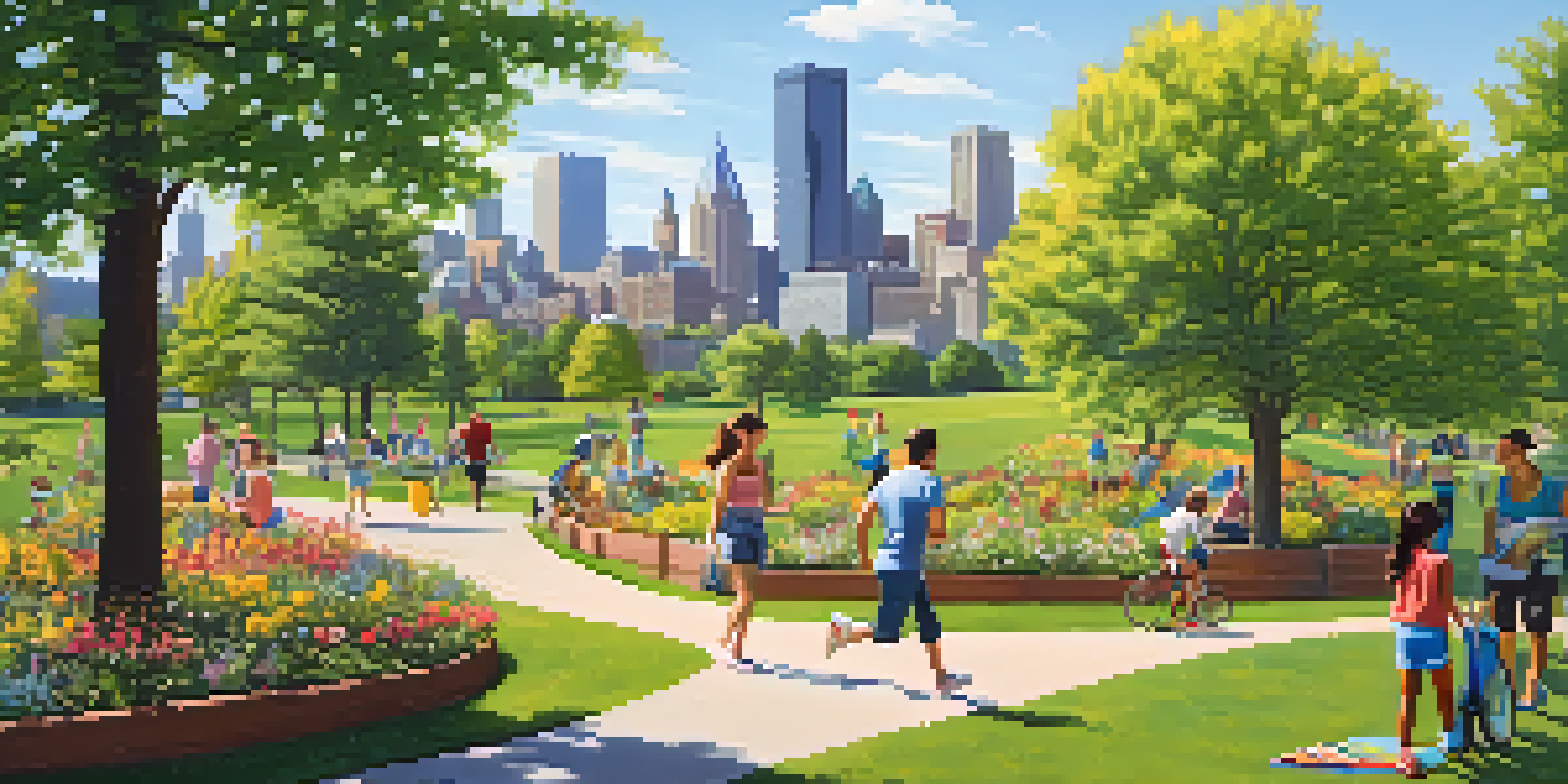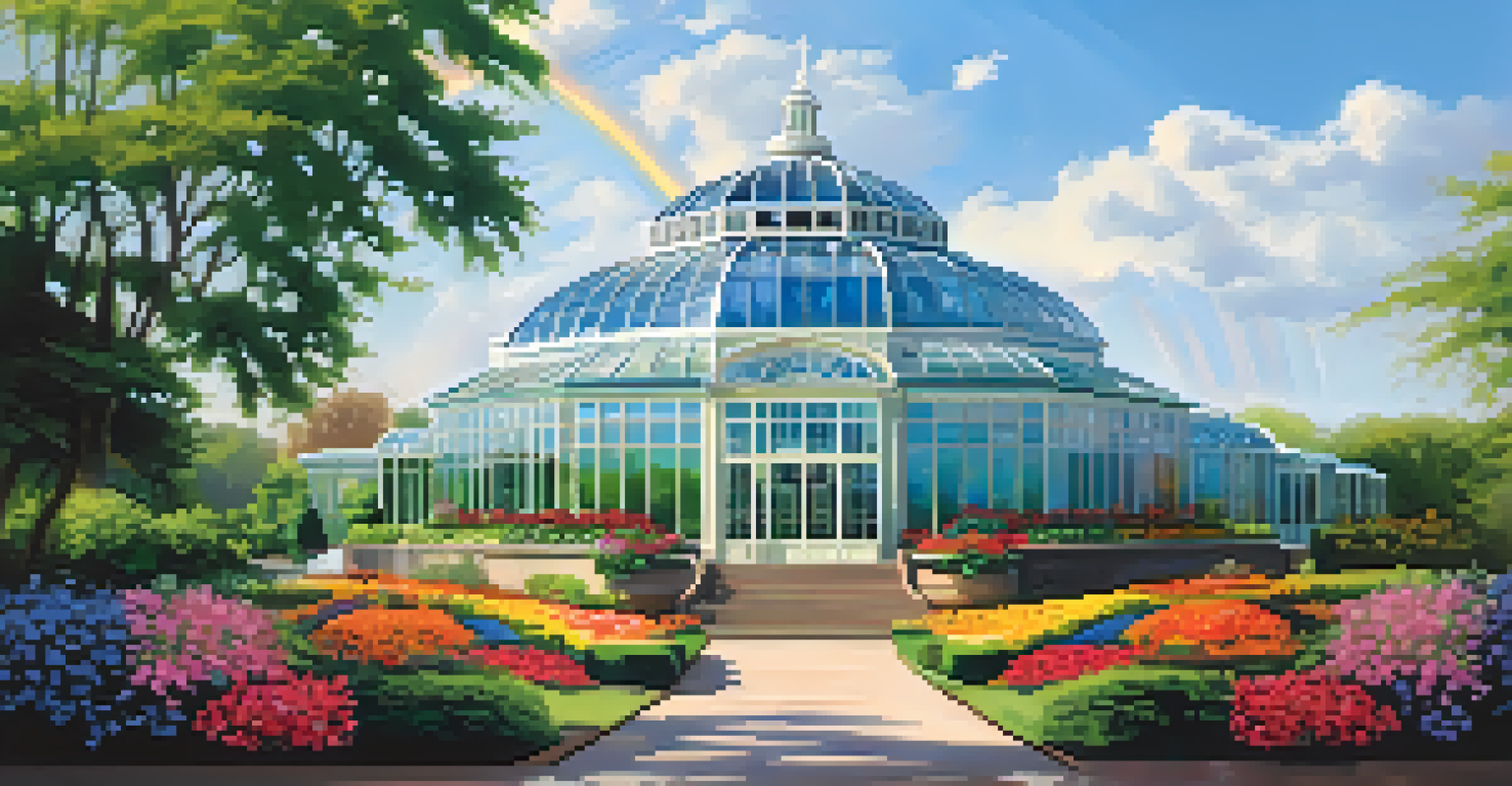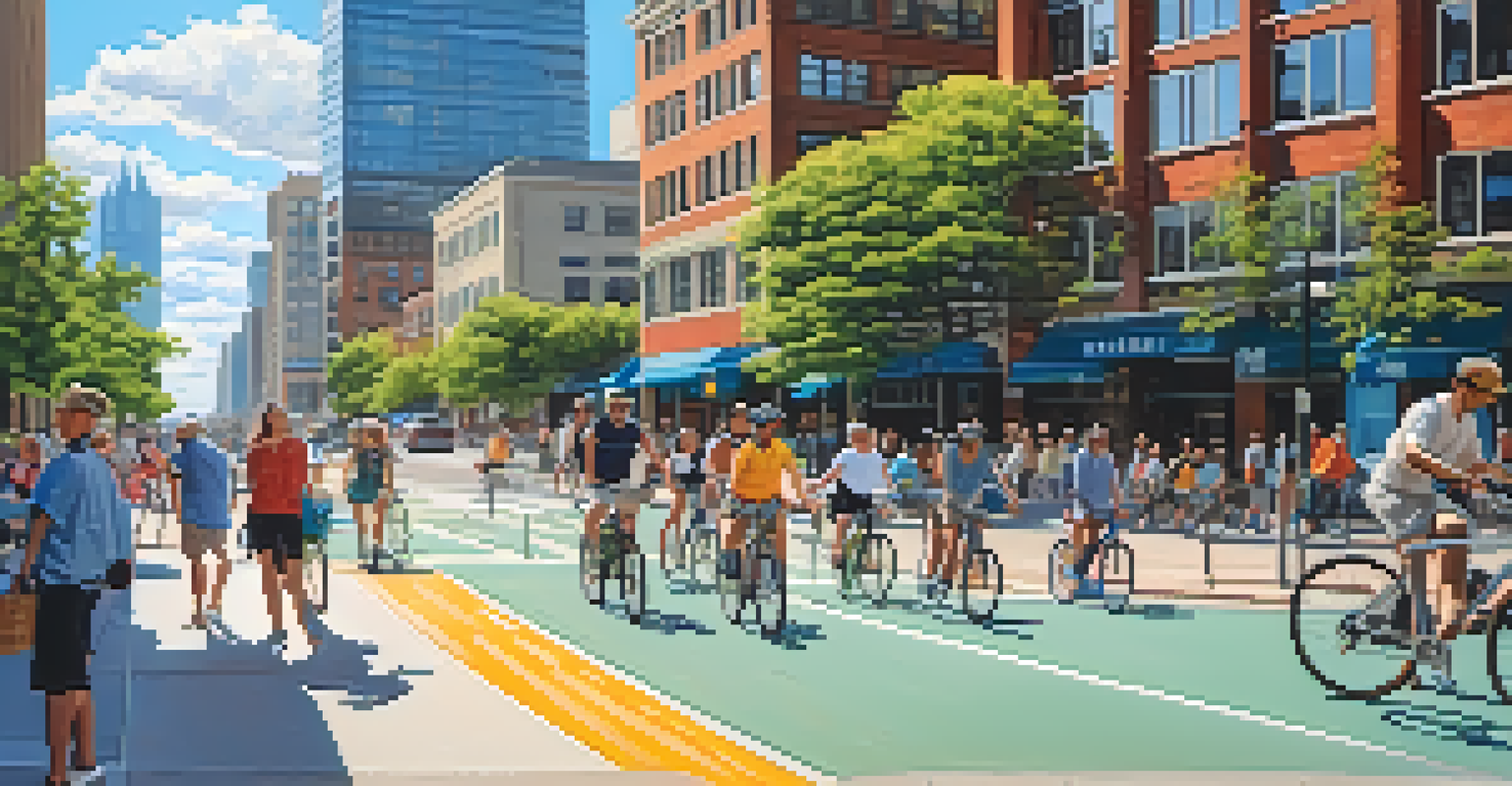Sustainable Urban Development: Pittsburgh's Green Architecture

Understanding Sustainable Urban Development in Pittsburgh
Sustainable urban development focuses on creating cities that meet today's needs without compromising future generations. In Pittsburgh, this means integrating eco-friendly practices into city planning and architecture. The goal is to balance economic growth, environmental health, and social equity within urban spaces.
Sustainability is no longer about doing less harm. It's about doing more good.
Pittsburgh, once known for its steel industry, has transformed itself into a model of sustainability. This transition began in the late 20th century, as the city faced economic shifts and environmental challenges. By embracing green initiatives, Pittsburgh has not only revitalized its economy but also improved the quality of life for its residents.
The city’s commitment to sustainability is evident in its policies and community involvement. From green building certifications to urban green spaces, Pittsburgh is paving the way for a brighter, more sustainable future. This shift also reflects a growing awareness among citizens about the importance of sustainable living.
Green Architecture: The Heart of Pittsburgh's Transformation
Green architecture is at the forefront of Pittsburgh's urban development strategy. This approach emphasizes energy efficiency, sustainable materials, and minimal environmental impact in building design. Notable projects, like the Phipps Conservatory and Botanical Gardens, showcase how architecture can harmonize with nature.

One of the key features of green architecture is the incorporation of renewable energy sources. Many buildings in Pittsburgh now utilize solar panels, green roofs, and advanced insulation techniques. These innovations not only reduce energy consumption but also contribute to cleaner air and reduced urban heat.
Pittsburgh's Sustainable Transformation
Pittsburgh has evolved from a steel industry hub to a model of sustainable urban development through green initiatives.
Moreover, Pittsburgh's green architecture is not just about new constructions; it also includes retrofitting existing buildings to enhance their sustainability. This adaptive reuse approach preserves historical structures while making them more energy-efficient. It's a win-win for both the environment and the city’s rich architectural heritage.
The Role of Community in Sustainable Development
Community engagement is crucial in driving Pittsburgh's sustainable urban initiatives. Local organizations and residents are actively involved in decision-making processes regarding green projects. This participatory approach ensures that the voices of the community are heard, fostering a sense of ownership and responsibility towards the environment.
The greatest threat to our planet is the belief that someone else will save it.
Neighborhood groups often collaborate with city planners to develop green spaces, community gardens, and eco-friendly infrastructure. These projects not only beautify the city but also promote biodiversity and enhance residents' well-being. When people feel connected to their environment, they are more likely to advocate for its protection.
Additionally, education plays a vital role in empowering the community. Workshops and events focused on sustainability raise awareness about environmental issues and encourage eco-friendly practices. By informing citizens about the benefits of sustainable living, Pittsburgh is nurturing a culture that values and prioritizes sustainability.
Innovative Transportation Solutions in Pittsburgh
Transportation is a key component of sustainable urban development, and Pittsburgh is making strides in this area. The city has invested in expanding public transit options, including buses and light rail systems, to reduce reliance on cars. This not only decreases traffic congestion but also lowers greenhouse gas emissions.
In addition to public transit, Pittsburgh is promoting alternative transportation methods like biking and walking. The city has developed an extensive network of bike lanes and pedestrian-friendly pathways, making it easier for residents to choose eco-friendly travel options. These initiatives encourage a healthier lifestyle while minimizing the city's carbon footprint.
Community Engagement Drives Change
Active participation from residents in decision-making fosters a strong sense of ownership and promotes sustainable practices.
Car-sharing programs and electric vehicle (EV) charging stations are also gaining traction in Pittsburgh. By providing residents with more sustainable transportation choices, the city is working towards reducing its overall environmental impact. This holistic approach to urban mobility is essential for creating a sustainable urban ecosystem.
The Importance of Green Spaces in Urban Areas
Green spaces play a pivotal role in sustainable urban development, offering numerous environmental and social benefits. In Pittsburgh, parks and green areas are not just recreational spaces; they also help improve air quality, reduce heat, and support wildlife. These natural areas contribute to the city’s overall ecological health.
Moreover, green spaces enhance the mental and physical well-being of residents. Research shows that access to nature can reduce stress, promote physical activity, and foster a sense of community. Pittsburgh's commitment to preserving and creating parks reflects its understanding of the importance of these spaces in urban life.
The city has undertaken various projects to expand its green space, including revitalizing riversides and transforming vacant lots into community parks. These efforts not only beautify the city but also strengthen community ties. By prioritizing green spaces, Pittsburgh is setting an example for other cities looking to enhance their urban environments.
Challenges Facing Sustainable Urban Development
Despite the progress Pittsburgh has made in sustainable urban development, challenges remain. One of the primary obstacles is funding; many green initiatives require significant investment, and securing financial support can be difficult. Balancing budget constraints with the desire for sustainability is an ongoing struggle for city planners.
Another challenge is the need for widespread public support and understanding of sustainability initiatives. While many residents are on board, there is still a segment of the population that may not fully comprehend the benefits of green development. Educating and engaging these community members is essential for fostering a collective commitment to sustainability.
Innovative Transportation Solutions
The city is enhancing public transit and promoting eco-friendly travel to reduce reliance on cars and lower emissions.
Moreover, Pittsburgh must navigate the complexities of urban growth, including population density and infrastructure demands. As the city evolves, maintaining a focus on sustainability while accommodating growth is crucial. Addressing these challenges will require collaboration between government, businesses, and citizens alike.
Looking Ahead: The Future of Sustainable Pittsburgh
As Pittsburgh continues its journey towards sustainability, the future looks promising. The city’s dedication to green architecture and community engagement sets a strong foundation for ongoing progress. With a clear vision and collaborative efforts, Pittsburgh aims to become a leading example of sustainable urban development.
Future initiatives may include expanding green infrastructure, enhancing public transportation, and increasing energy efficiency across all sectors. By investing in sustainable technologies and practices, Pittsburgh can further reduce its environmental footprint and improve residents' quality of life. The potential for innovation in this area is immense.

Ultimately, the success of Pittsburgh's sustainable urban development will rely on the collective efforts of its residents, government, and businesses. By fostering a culture of sustainability and adaptability, the city can navigate the challenges ahead and continue to thrive as a vibrant, green urban center.